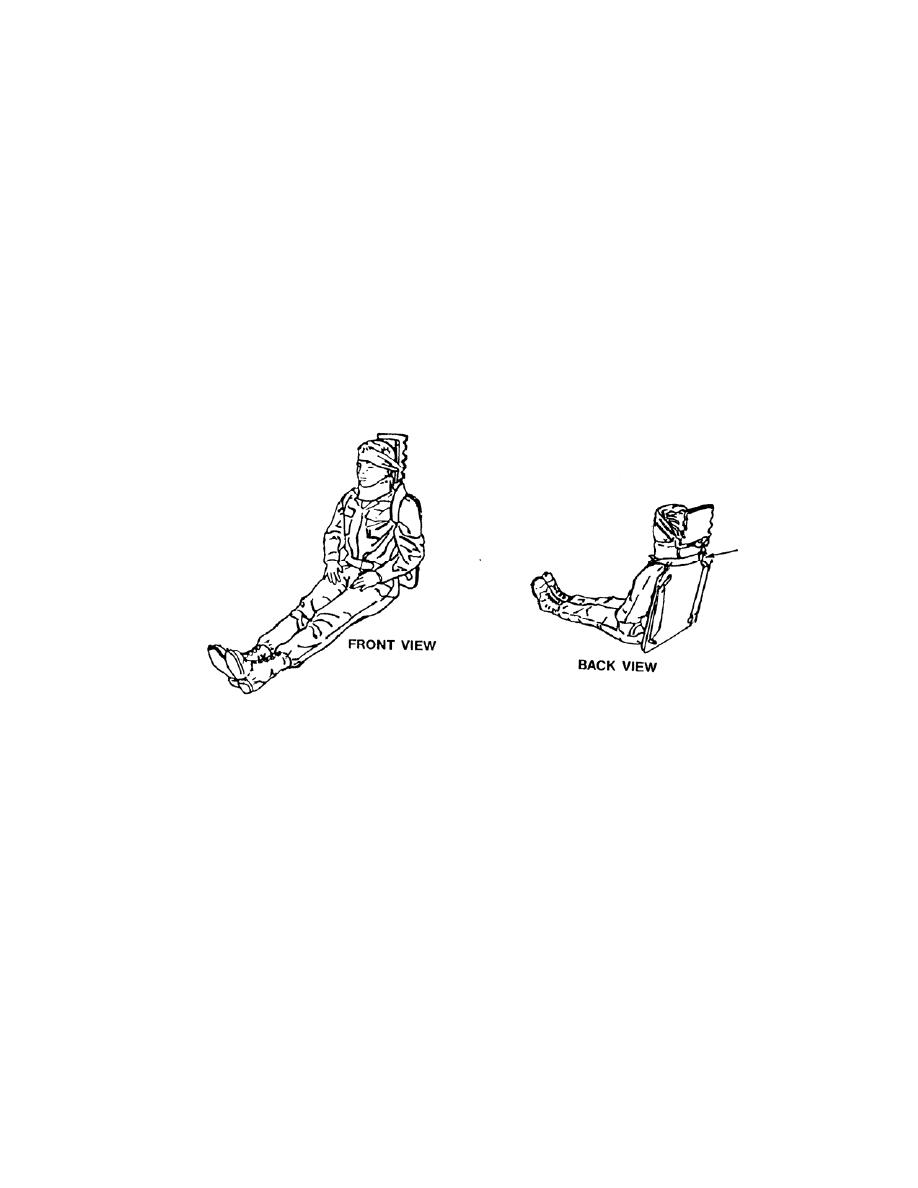
(2) If a cervical collar has not been applied to the casualty, have the
assistant place a roll of material in the hollow space between the neck and the board to
help keep the neck in its normal position when the casualty is removed from the vehicle.
The roll should be large enough to fill the gap, but not large enough to exert pressure on
the neck.
(3) If available, have the assistant place a support (rolled towel, blanket,
sandbag, or similar material) next to each side of the casualty's head before securing
the casualty's head. The additional material will help to prevent motion. The supports
and the head are secured as a single unit.
(4) Have the assistant secure the casualty's head to the board using a head
strap or cravat (see figure 2-8). Once the casualty's head is firmly secured, you can
release your hold on the casualty's head.
Figure 2-8. Short spine board and cervical collar applied to a sitting casualty.
e. Secure Casualty's Back to Short Spine Board. Secure the casualty's back
to the spine board using two body straps or improvised straps (see figure 2-8).
(1)
Place the buckle of the first body strap in the casualty's lap.
(2) Pass the other end of the strap through the lower hole in the board, up
the back of the board, through the top hole, under the casualty's armpit, up over his
shoulder (same side as armpit), and across the back of the board at the neck.
(3) Take the second body strap and buckle it to the end of the first body
strap (the end at the back of the board near the casualty's neck). The buckle should
rest on the back of the spine board and not press on the casualty's neck.
MD0533
2-15


 Previous Page
Previous Page
